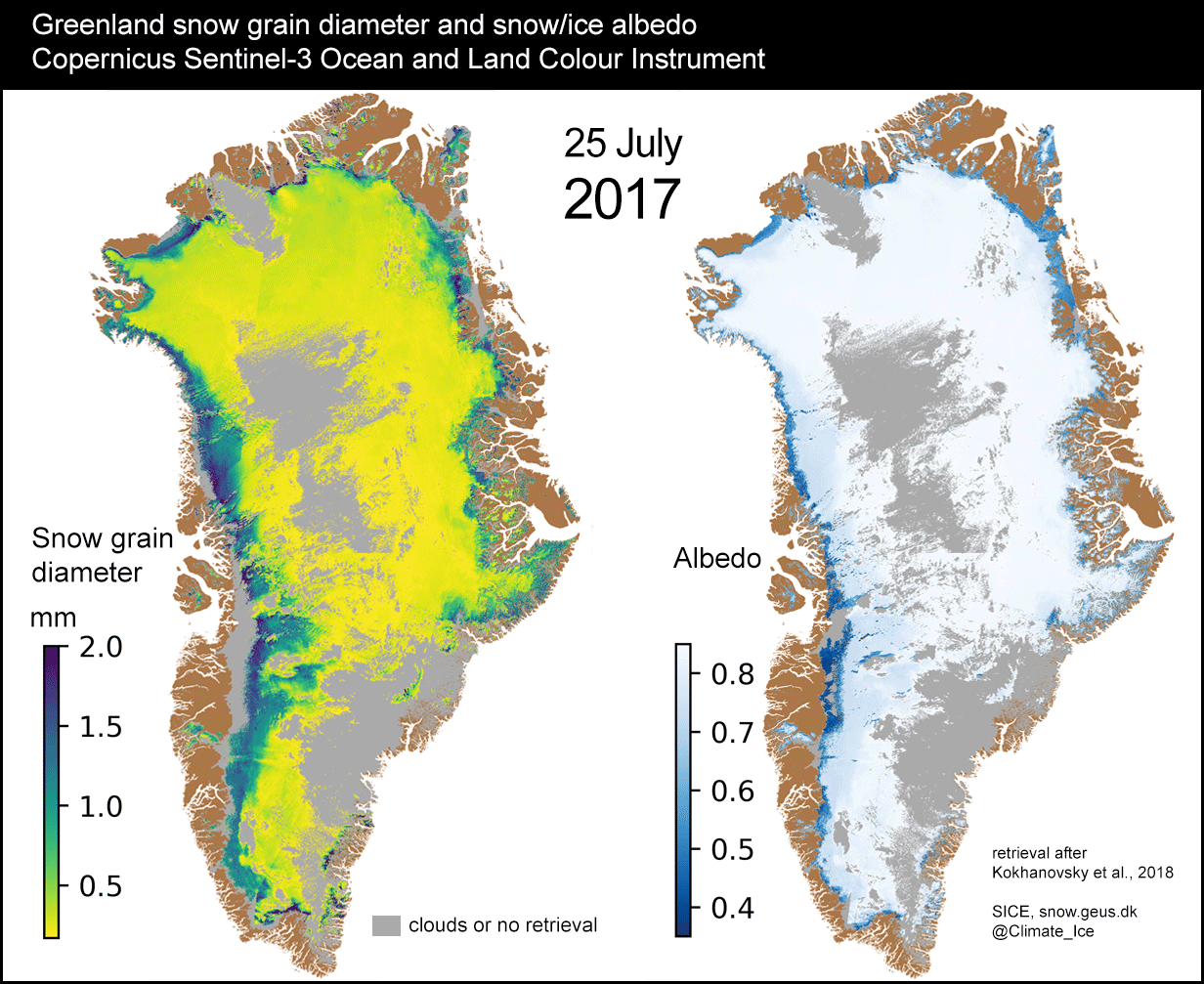

Weather station high on the Greenland ice sheet
For the first time ever recorded, in the late summer of 2021, rain fell on the high central region of the Greenland ice sheet. This extraordinary event was followed by the surface snow and ice rapidly melting. Researchers discovered that it wasn’t the rain that caused the melt, it was unusually warm ‘atmospheric rivers’ that swept along Greenland, bringing potent melt conditions when the melt season would normally be drawing to a close. Thanks to detailed measurements from the network of automatic weather stations on the ice set up by the Department of Glaciology and Climate at the Geological Survey of Denmark and Greenland coupled with measurements from the Copernicus Sentinel-3 satellites in space helped researchers understand the exact processes and dynamics of how the ice melts.
Read full story: Historic Greenland ice sheet rainfall unravelled





